Cape Scott Provincial Park curves around the north end of Vancouver Island, protecting the coast and coastal rain forest from local mining and logging activity. On a map, it looks deceptively close to Victoria—just a hop, skip and a jump away. A quick search will tell you that Cape Scott Provincial Park is a 7-hour drive up the Island from the provincial capital. Despite the distance, this park is worth the visit.
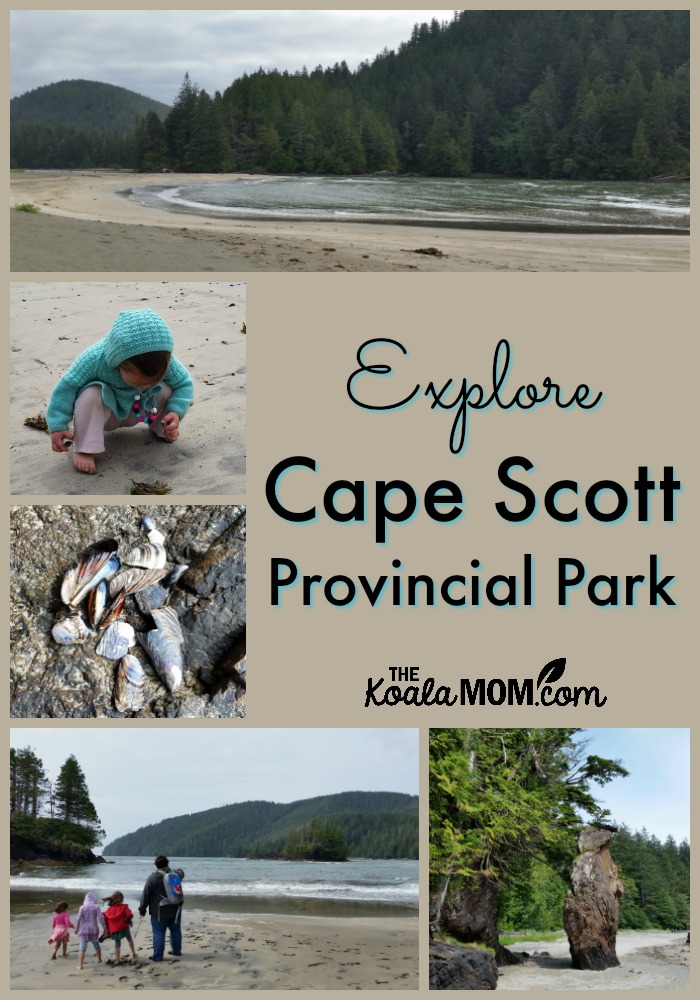
As we planned a camping trip to Port Hardy for the end of August, Cape Scott Provincial Park was at the top of our list of things to do. We’ve been wanting to visit this park since moving to Victoria, but, well, it was always so far away. This time, we made it happen.
Getting to Cape Scott Provincial Park
Port Hardy is the major centre closest to Cape Scott Provincial Park. You can reach Port Hardy via ferry from Prince Rupert, highway from Nanaimo, or airport from Vancouver. Once you’re in Port Hardy, you can either catch the water taxi around the coast to Cape Scott or drive across the end of the island to Cape Scott. We chose the overland route.
Once again, distances here are deceptive. San Josef Bay is only about 70 km from Port Hardy, but it took us two hours to drive that far. The road leaves Port Hardy as a wide, paved road. By the time we reached the parking area for San Josef Bay, the road was barely wide enough for two vehicles and full of potholes and washboard. We had been warned that it was “rough” and suitable only for 4x4s, but the parking lots was full of mini vans like ours, plus a few small cars. Drive carefully, give yourself plenty of time, and watch out for other traffic (including logging vehicles).
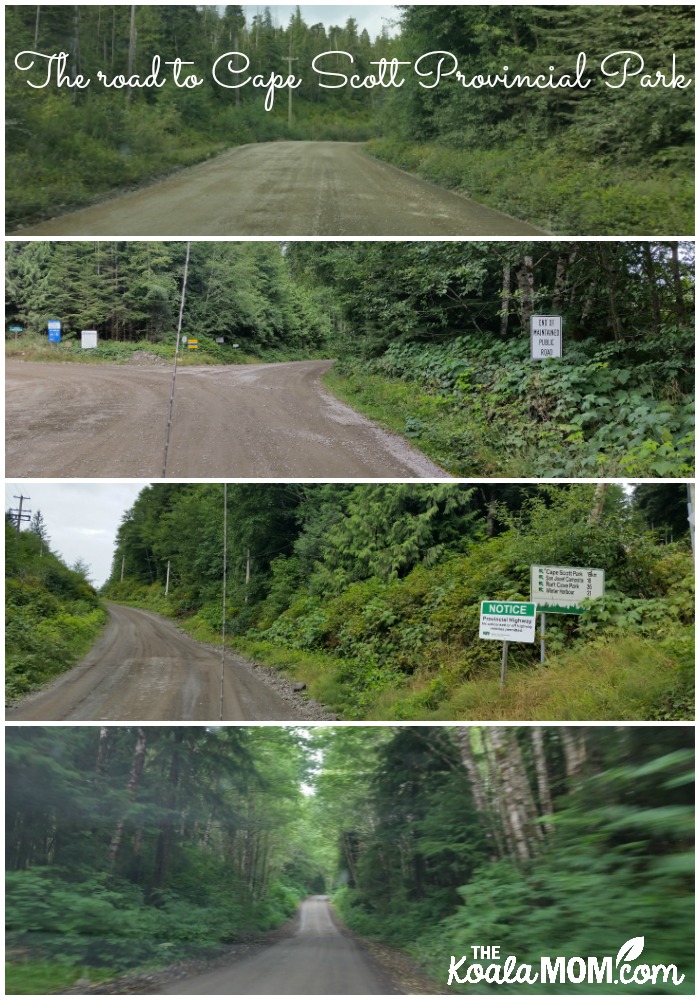
My husband found the signs along the road amusing. Note that the road is a “provincial highway” all the way from Port Hardy to Cape Scott. We also didn’t meet any logging traffic, perhaps because it was a Saturday when we drove out.
Hiking at Cape Scott Provincial Park
When we reached the San Josef Bay parking lot, we were amazed at the number of cars parked there. We’d passed a couple of cars driving there, and seen a few cars driving out, but the parking lots was packed with 20-30 vehicles. We found a parking spot and dashed to the outhouses. Then we hauled our picnic lunch to the sheltered picnic area to have sandwiches before starting down the trail.
San Josef Bay is the access point for several hiking trails in Cape Scott Provincial Park, including the North Coast Trail (a more rugged version of the popular West Coast Trail). There are no park fees, unless you are camping overnight. It seemed strange that we’d meet more people on this remote trail than we had on the Tex Lyon Trail near Port Hardy, but the trail itself was an easy hike after the long drive.
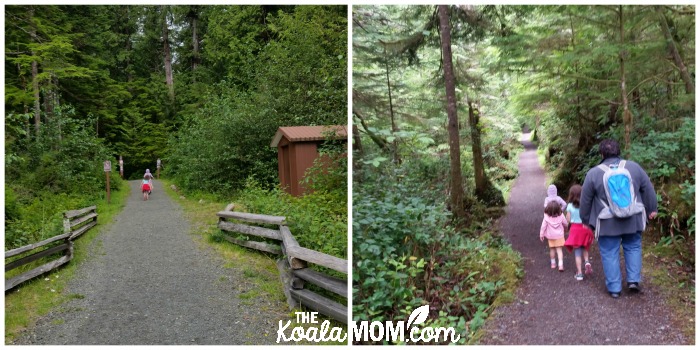
We took the 2.5-km trail from the parking lot to San Josef Bay. Flat, wide and gravel, the trail was an easy walk and would be accessible for a jogging stroller or wheel chair. In fact, the trail was so easy to walk that Pearl wanted to hike most of it herself. There were a couple bridges and boardwalks to get over muddy sections and the river. Outhouses are located at the parking lot and at the end of the beach.
Exploring San Josef Bay
San Josef Bay itself is stunning and well worth both the drive and the walk. The girls dashed out onto the sand, exclaiming at how soft it was, and promptly began to dig and bury themselves. Waves rolled in from the bay, curving toward the estuary.
Staring out at the ocean, it was easy to imagine how early settlers would have found this secluded bay and tried to start a village just up the river. (Unfortunately, there wasn’t road access to the village 100 years ago, so it was abandoned during World War I.)
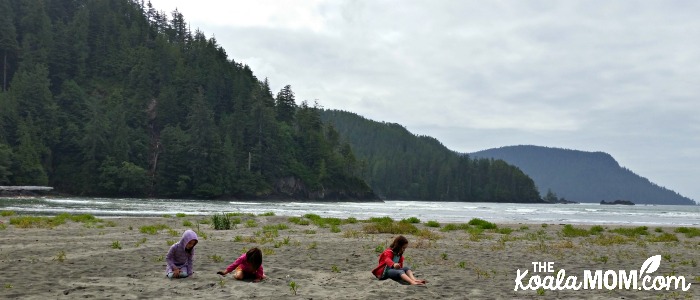
Our little trail guide book had shown a picture of unique rock formations at San Josef Bay. After admiring the rolling waves, I glanced around for these. No pinnacles were in sight, but I guessed they must be at the north-east end of the beach, to the right from where we’d exited the trail. Prying the girls from the soft, dry sand by telling them there was more beach to explore, we headed toward the water to follow the harder sand around the coast.
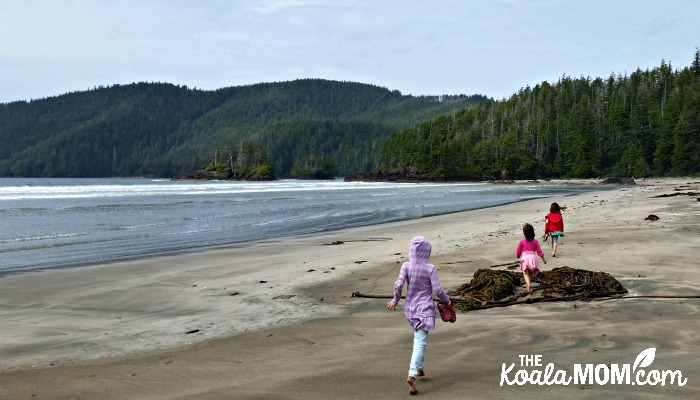
The tide was going out as we walked, leaving plenty of treasures to discover on the beach. Even Pearl began picking up shells to show us. While Sunshine, Lily and Jade ran ahead, my husband and I meandered behind at Pearl’s pace. I found a huge, empty barnacle, and then a barnacle with a tiny chiton clinging to it. Big, empty mussel shells dotted the beach, along with strands of kelp.
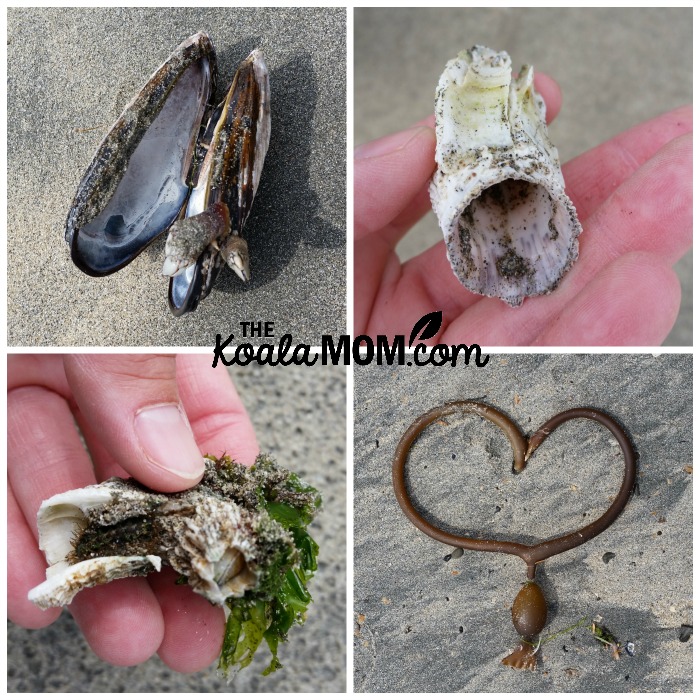
The girls know my beach rule well: What we find on the beach stays on the beach. I showed them my chiton, then threw it back into a deeper part of the water (where it hopefully wouldn’t dry out in the sun). We admired the kelp heart, but left it where we’d seen it in the sand, for others to find behind us. Pearl picked up shells and discarded them as soon as she found another, more interesting treasure to examine.
The Pinnacles and Caves
As we got closer to the north-east end of the beach, we could see the rock formations. Pinnacles of stone rose from the beach, sporting trees and grasses at their tops.
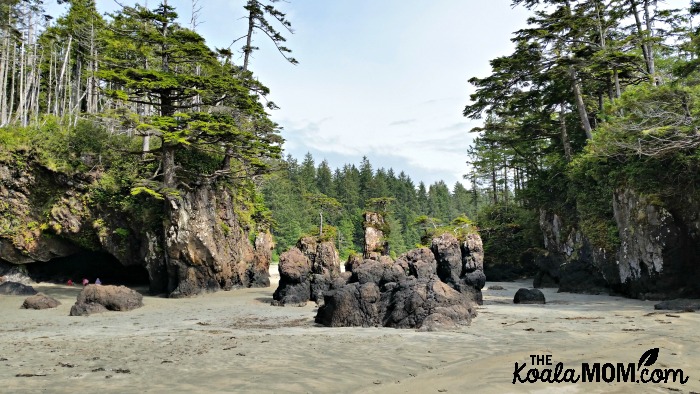
Waves had eroded two caves from the cliffs at the edge of the beach. Further down, an island of rock resisted the waves washing around both sides of it. Pictures hardly do justice to the area, much less words.
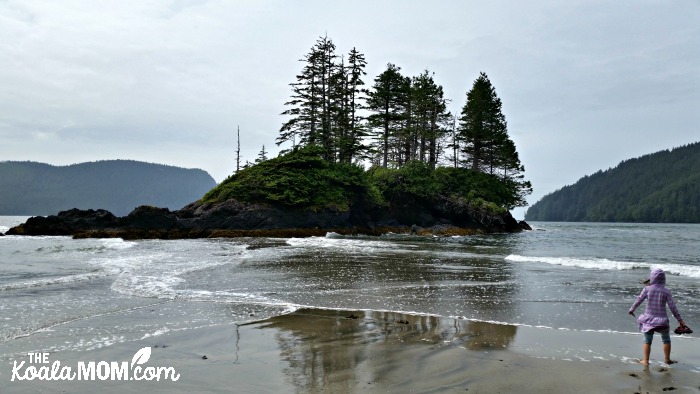
We sat on the beach there while the girls played. Sunshine and Lily had fun chasing the waves up and down the beach, and finding how their feet sank into the soft, wet sand as the water retreated. Pearl and Jade played in a smaller cave, where Jade arranged her shell collection. (Sunshine and Lily had checked out the cave, then dashed out with comments about “trolls” in the dark, because we’d been listening to The Hobbit on the drive there.)
Finally, with the hike and drive ahead of us, we pried ourselves away from the mesmerizing sand and waves. We hiked back through the pinnacles to the other side of the beach. Here, we found that the retreating tide had left more rocks behind to explore. We inspected a few tide pools, but found only sandy anemones and barnacle-covered rocks.
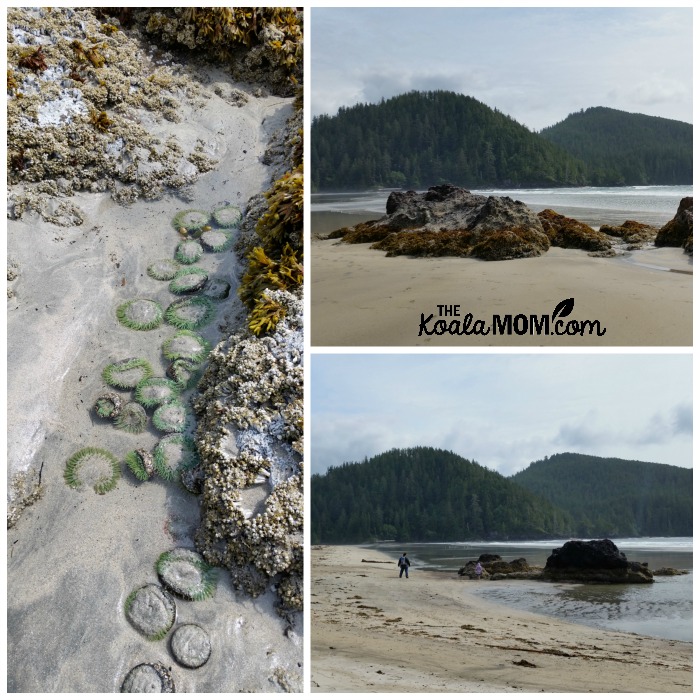
We wandered back to the trail head at the edge of estuary, and put shoes and socks on. (The girls managed to lose only one sock in all their beach wanderings.) Then we hiked back down the trail to the parking lot. Pearl protested vociferously about not being allowed to hike, but eventually had a short nap in the baby carrier. The other girls were tired after our two days of hiking, and needed some encouragement (and snacks) to keep going.
If you find yourself on the north end of Vancouver Island, I heartily recommend a trip to Cape Scott Provincial Park. Someday, I’d like to take the girls back to enjoy more of the beach and coast via the North Coast Trail. Until then, we’ll keep dayhiking.

No Responses Yet